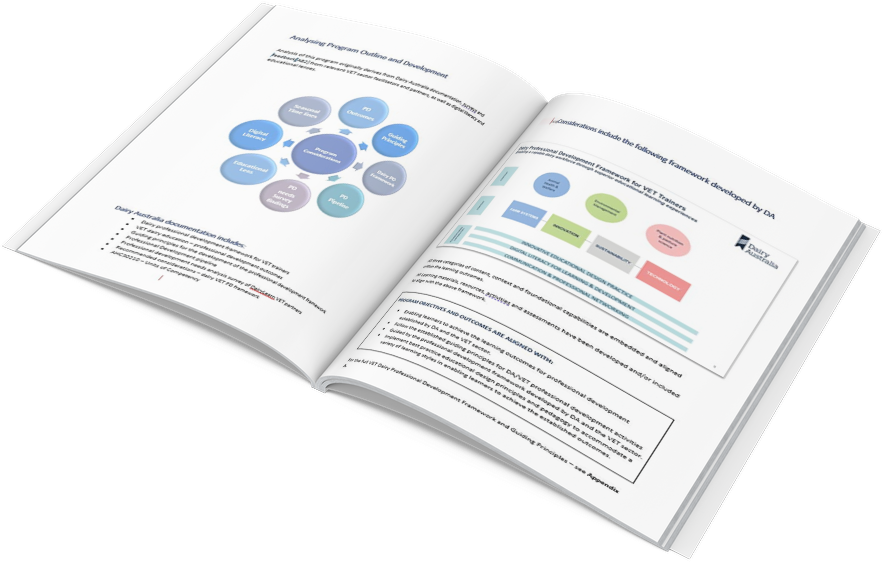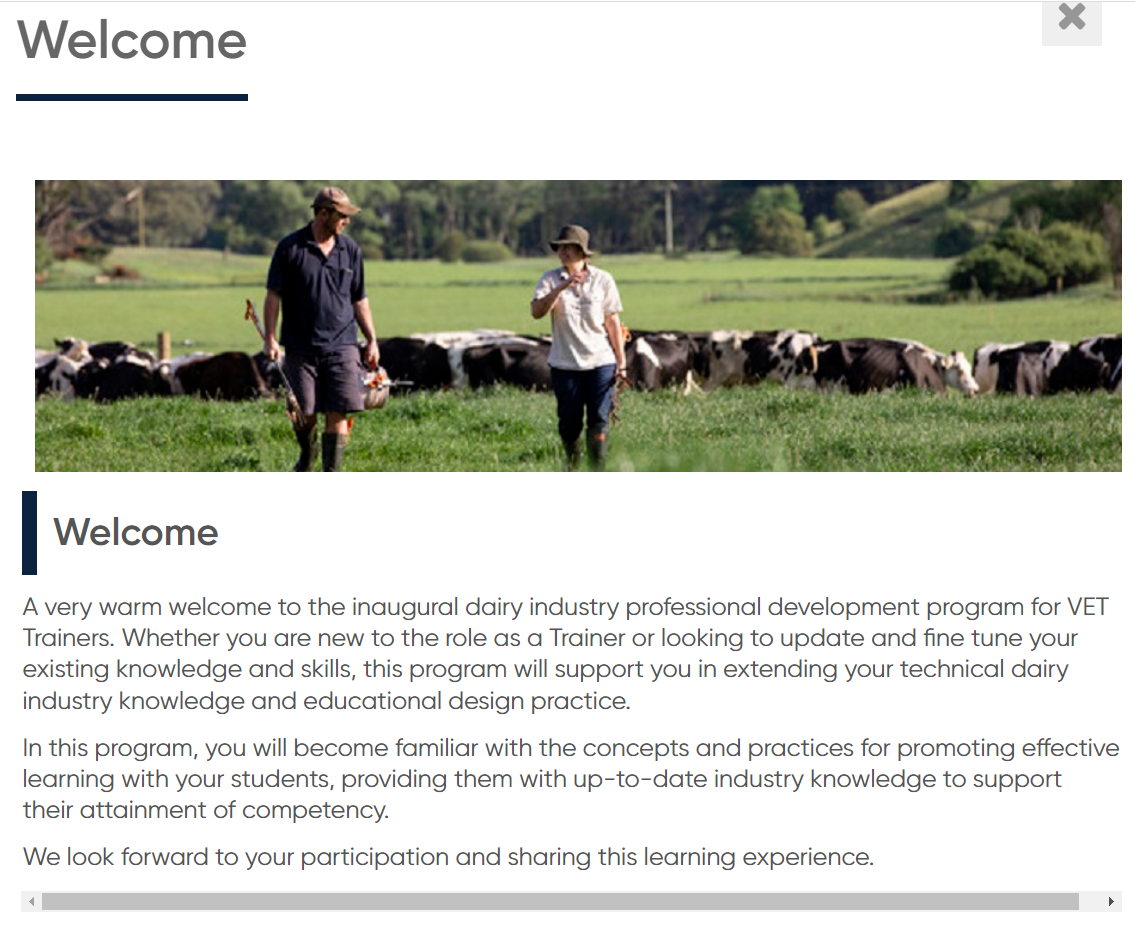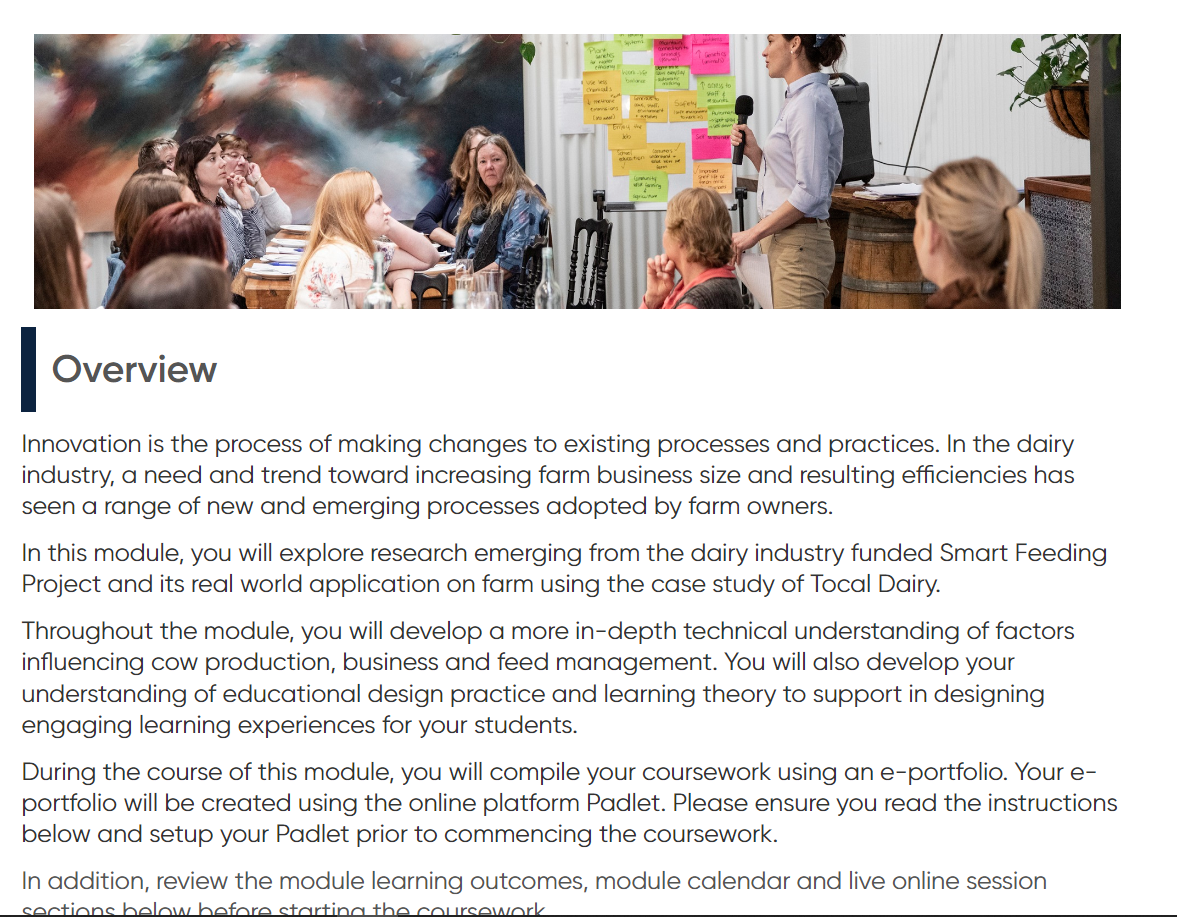Vocational Dairy Educators PD
Program design explained
Client
Dairy Australia
Year
2023
Attributes
Evaluate existing course through an educational lens
Brainstorming and consultations with key stakeholders
Program design and development
Designing and writing learning outcomes
Curriculum design and development
Explaining the under lying theories and how they influence the learning design
The underlying educational theories used in this program design and development are:
- Blooms Taxonomy – Benjamin Bloom 1956
- ADDIE instructional design model – Florida State University 1970s
- Scaffolding – Jerome Bruner 1960s.
- Adult Learning Principles – Kolb 1980
- Backward Design Model – Grant Wiggins and Jay McTighe
- Objectives and Outcomes
- Learning styles
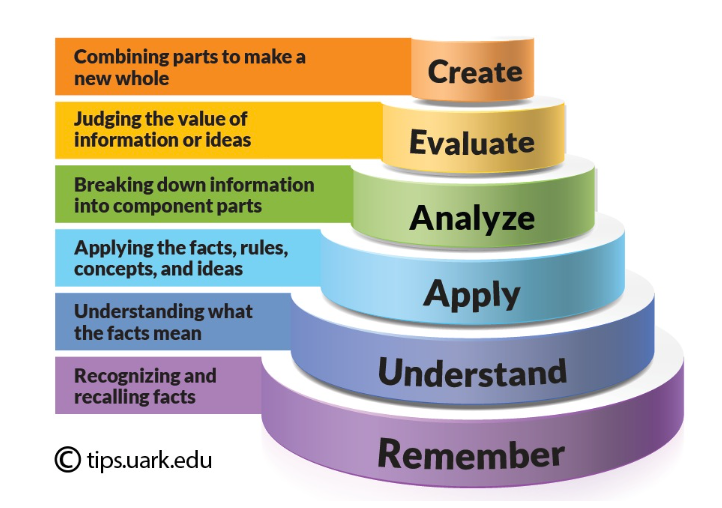
BLOOMS TAXONOMY
By applying this model to the program, it guides the learning content from basic – remembering skills to the more intermediate skills of applying the learning. The higher levels of evaluating and creating require more critical thinking and problem solving skills. These usually require more activity and discussion based learning.
ADDIE
The ADDIE process represents the five phases of the instructional design plan which are Analysis, Design, Development, Implementation, and Evaluation. These five phases were established as an effective training method and meant to be followed in sequential order, and on The ADDIE method will work in training and development because the whole approach was designed to give feedback for the continuous improvement of the project.
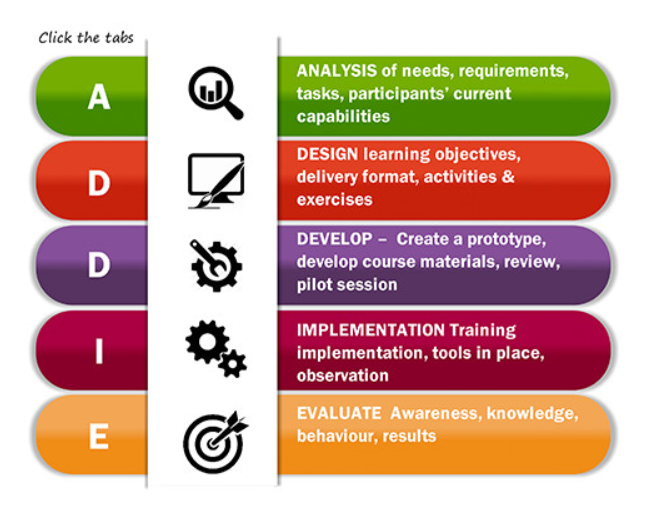
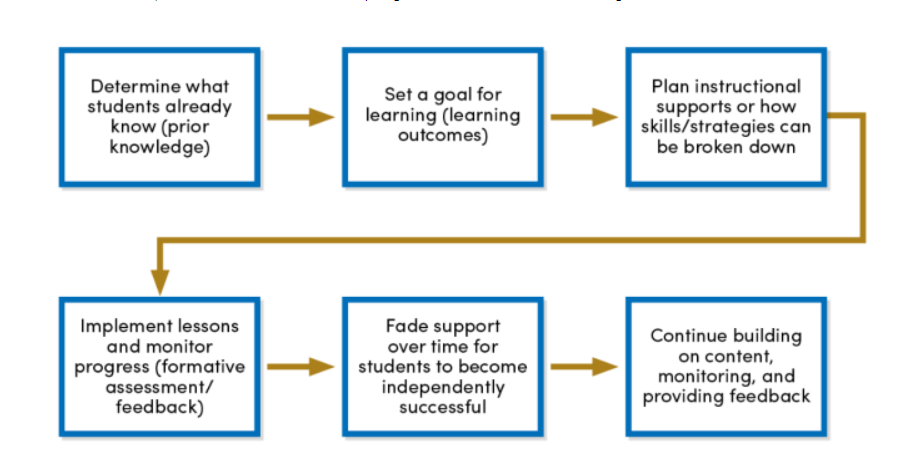
SCAFFOLDING
Scaffolding is a process that should be strategically embedded into both the design and insruction of your course. In many cases, it follows a similar progression as shown in this diagram. A variety of scaffolding strategies can be embedded into the course design or individual lesson plans:
- ‘Chunk’ complex skills or assignments into small ‘digestible pieces’
- Divide instruction into mini-lessons with periodic checkpointsL
- logically and meaningfully set up course structure
- Provide additional supports, resources and references (these are often in buttons or links)
- Incorporate technology support
- Share lesson goals or objectives
- Build upon learners prior knowledge and experience
- Share examples and exemplars
- Provide steps, processes or procedures
ADULT LEARNING PRINCIPLES
- Self-discovery – The learner determines what they want to learn and exploes that topic but considers what is the benefit and risk to learning about a particular topic. The learner is also encouraged to be curious about new subjects along their way.
- Experiential learning – This considers the experience the learner already has on a certain subject and allows them to build on that experience.
- Problem solving – The emphasis is placed on the problem the training is expected to solve, and not on the content that is presented.
- The learning is relevant to the task, or situation – because the learner deems it relevant, they are motivated to complete the learning experience. If the content becomes irrelevant to the problem at hand, they will no longer proceed with the learning experience.

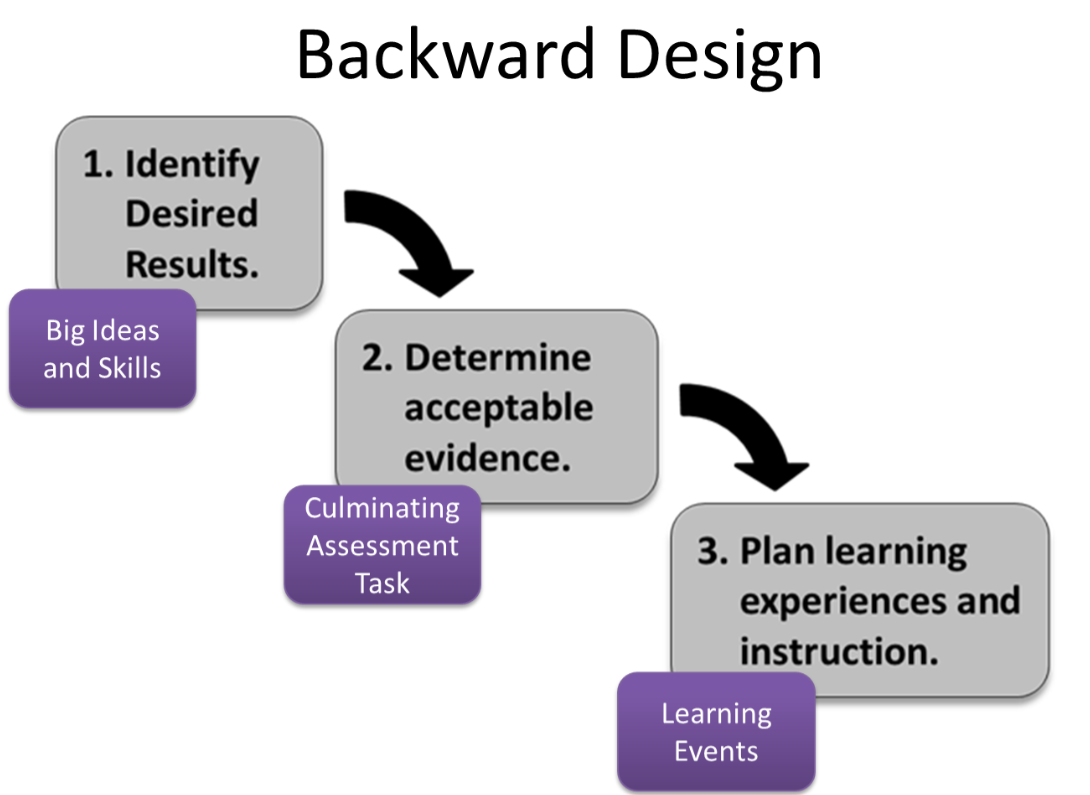
BACKWARD DESIGN MODEL
Backward design could also be referred to as “purpose-driven teaching.” It asks you to first identify what learning outcomes you want your students to achieve before considering what methods and tasks students will engage. By focusing first on the outcome, backward design helps you to plan your courses and tasks with a great degree of purpose and intentionality. The effect of planning a course backwards is a strengthened alignment between student learning and student work as well as more transparent instruction.
LEARNING STYLES
Identifying your participants as visual, auditory, reading/writing, kinesthetic, learners, and aligning your overall curriculum with these learning styles, will prove to be beneficial for your entire course.Keep in mind, sometimes you may find that it’s a combination of all three sensory modalities that may be the best option. Allowing students to access information in terms they are comfortable with will increase their academic confidence.
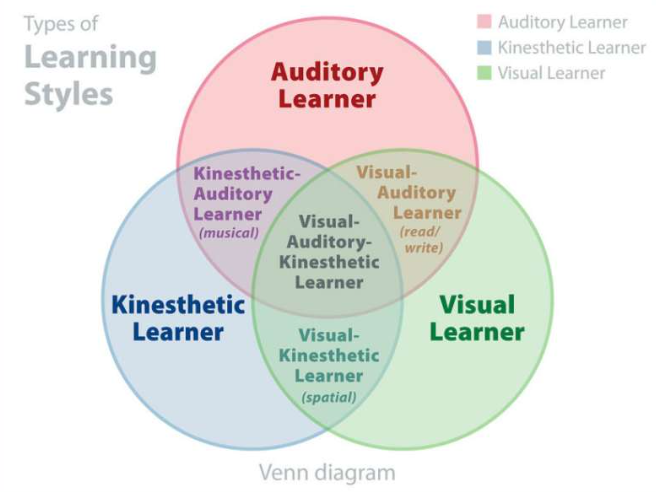

LEARNING OBJECTIVES & OUTCOMES
Learning goals and objectives generally describe what an instructor, program, or institution aims to do, whereas, a learning outcome describes in observable and measurable terms what a student is able to do as a result of completing a learning experience (e.g., course, project, or unit).
SUMMARY
All of the above theories were used as a wholistic guideline when building this course. There are many other theories, eg., Kolbs experiential learning cycle that are implemented when appropriate. These guidelines form the basic structure of the course and address many of the learning concerns that instructional designers take into consideration when designing a course.

